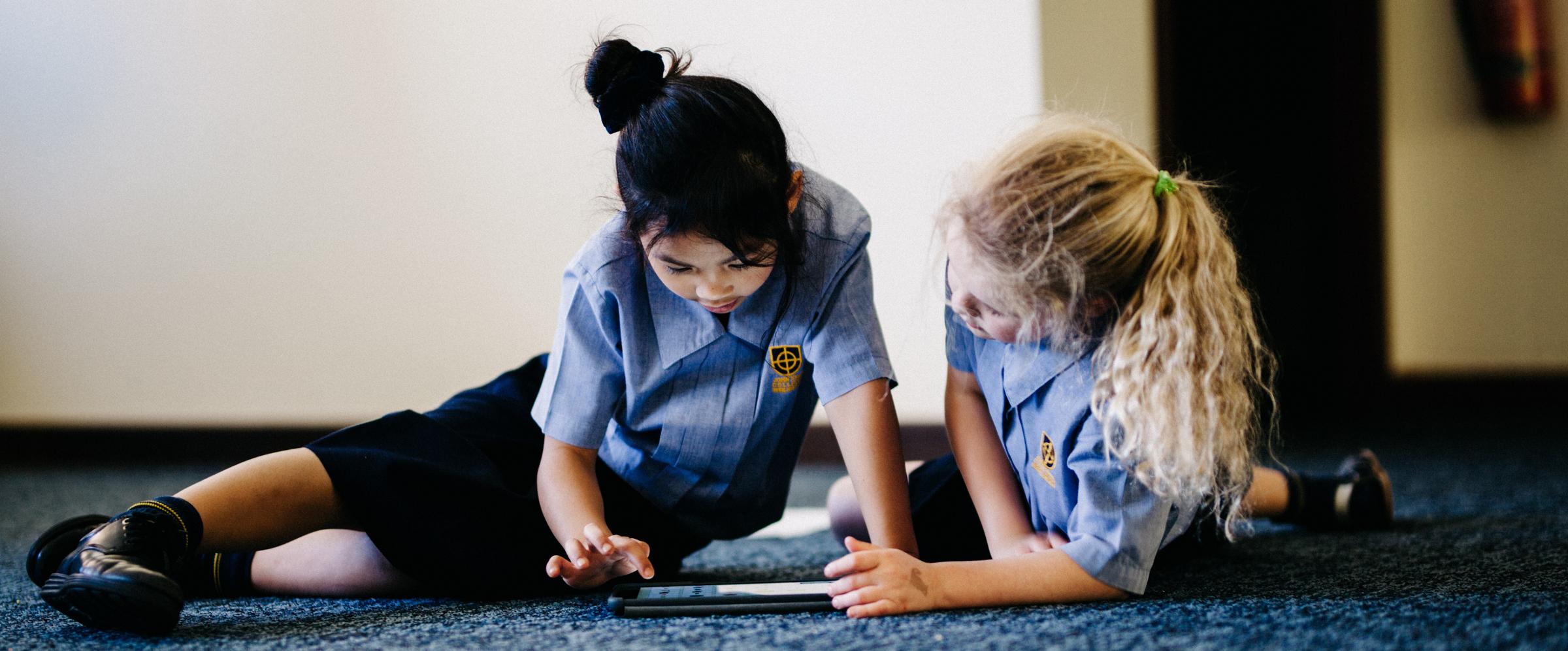
Cyber Safety
Choosing great content for younger kids
It seems like every game and app out there is describing itself as “educational” these days. So how can parents choose the best content? Experts have devised a simple model that can help.
“Although more than 80,000 App Store apps are described as being education- or learning-based; however, there are currently no science-based standards to guide this determination,” according to research published in the journal Psychological Science in the Public Interest.
“This has left parents and teachers wondering how to tell the educational apps from the ‘educational’ apps.”
And that’s exactly why child development experts have developed the E-AIMS model: to help mums and dads choose content that goes beyond entertainment - making learning fun but also challenging.
E-AIMS is based on four simple questions:
- Is the content ENGAGING?
- Does it ACTIVELY INVOLVE my child?
- Is it MEANINGFUL?
- Is it SOCIAL?
Let’s break it down.
Is the content ENGAGING?
No matter how well intentioned an app or game might be, if it doesn’t engage our child’s interest, it will never promote learning.
Needless to say, most of the purely entertaining games our kids love to play score well in this category. For the most part, that’s because they involve achieving a goal - finishing a level, say, or scoring points - or following a compelling storyline.
Great educational content tends to operate in exactly the same - to hook kids in, and keep their attention focused. Beware of content that may be engaging but that takes the child outside the story or challenge with random buttons or pop-up ads.
Does it ACTIVELY INVOLVE my child?
This refers in part to the level of difficulty involved. Too easy and familiar and your child will switch on to mental autopilot. Too hard, and they may experience frustration and anxiety instead of learning.
This is probably the trickiest question for parents to answer - but it’s also the most critical. And it’s the reason why it’s essential to monitor your child’s experience with any new educational content. If you find they’re zoning out, either due to boredom or to confusion, you’ll know the content is pitched either too high or too low.
“Although more than 80,000 App Store apps are described as being education- or learning-based; however, there are currently no science-based standards to guide this determination ..."
Is it MEANINGFUL?
Content that relates to your child’s everyday life - such as mealtime or playtime - is likely to support more learning than content with lots of imaginary beings or fantasy situations. The latter definitely has its place, especially for older kids. But younger kids relate best to characters and situations that are familiar and recognisable.
Is it SOCIAL?
An increasing number of apps and games aimed at kids include group chat, video chat and even live streaming. This is NOT the meaning of “social” here. On the contrary, most cyber experts warn that extreme caution should be exercised with any chat function when younger children are involved.
Rather, this question refers to interactivity. Does the content encourage your child to talk or otherwise respond directly within the game - and to elicit an answering response? Does it encourage them to interact with mum or dad when the two of you play together? If the answer to these questions is “yes,” the likelihood is high that powerful learning is taking place.
Reference: https://www.familyzone.com/anz/families/blog/choosing-great-content-for-younger-kids
